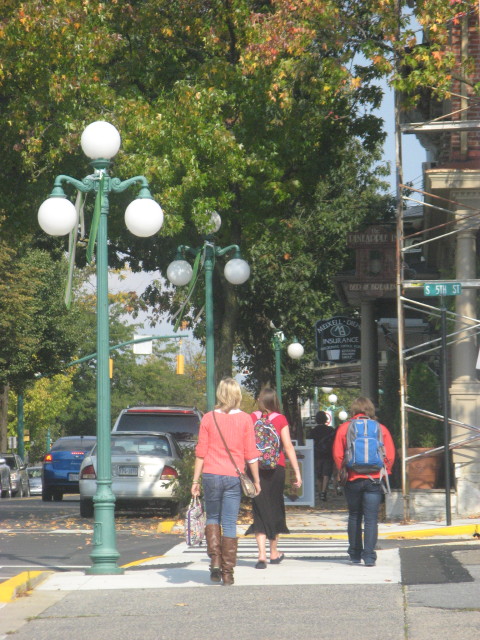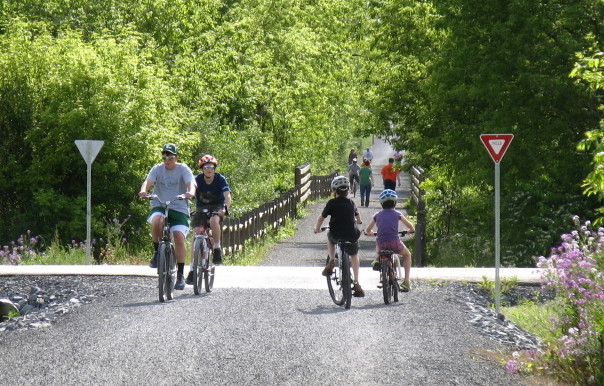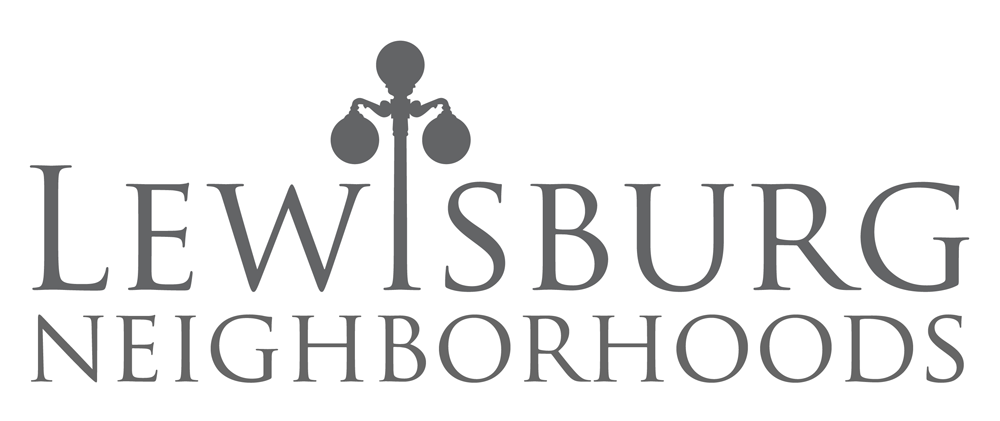
There is no Elm Street, per se, in Lewisburg. But there is an Elm Street Program. "Elm Street" refers to the quintessential residential neighborhood street. It is the name given to a state program designed to promote the revitalization of walkable, historic neighborhoods immediately surrounding Main Street Program areas. There's also no Main Street here. But there is a Main Street Program; the Lewisburg Downtown Partnership works to promote the economic vitality of the commercial core. Elm Street is intended to complement Main Street, to ensure continuity and healthy context for the vibrant core. It goes beyond just economics to core community health.
One of the primary components of core community health is walkability. As Jeff Speck outlines in his book Walkable City: How Downtown Can Save America, One Step at a Time (TED Talk here), there are epidemiological, environmental and economic aspects to walkability, each compelling in their own right, but together making walkability a win-win-win scenario for individuals, nature and society. Walkability builds in access to healthy habits for all, it reduces fossil fuel dependence, and allows for space to be used to maximum financial advantage, rather than squandering it on parking and other car infrastructure. More and more people across the nation are focusing on walkability as an index of livability and community attractiveness, as this article from the Lehigh Valley Morning Call notes.
According to an algorithm known as the Walk Score (a program developed through Front Seat and now under the aegis of Redfin), the center of downtown Lewisburg has a walkability rating of 75 out of 100, "very walkable." (Keen readers may note that over the years, the same location has received progressively lower walk score ratings. This is a function of refinements in the algorithm more than changes in town. It was in the 90s in the mid-2000s, dropped to 85 in the mid- 2010s, and is now down to 75. It is still rated "very walkable," however. Similarly, locations like that of the new high school have had the reality of their situation more accurately reflected. That location was in the 40s a decade ago, dropped to the 20s, and now registers as a 5, or "car-dependent." As the reach and precision of mapping to reflect the presence or lack of sidewalks, their condition, and larger questions of whether there are pedestrian-friendly policies get overlaid, sites are reassessed.) That means that people downtown have access to a wide range of services and many errands can be accomplished on foot. That goes for visitors to town as well as residents. If people get into the pedestrian mindset, even those arriving by car can stow the car and then conduct business in a number of different locations on foot.
That said, Lewisburg is a walkable town rather than city. Its limitations have mostly to do with scale and regional placement. It is not (yet) integrated into a larger walkable or bikeable network. But that is starting to change. With the completion of Phase I of the Buffalo Valley Rail Trail in 2011, new horizons in bike and pedestrian access have opened up for the community. The trail already goes into and through Mifflinburg Borough and in fact sees its highest traffic in that area. Now it's time to integrate it into the walkable heart of Lewisburg as well.
 Last month, the Department of Conservation and Natural Resources (DCNR) announced a grant award to the Buffalo Valley Recreation Authority for additional design and construction for the Rail Trail. The project scope includes a component for design and construction of an additional trailhead in Vicksburg, preliminary engineering design for an at-grade crossing of Rt 15 at the former RR track alignment, and final design and construction of the trail (less the highway crossing) from the current terminus at 12th St to 5th St, with a spur down to Market St parallel to the North Shore Railroad tracks. This is great news for the region and for downtown neighborhoods. It brings the area another step closer to full walkability and begins to realize the vision for a Bull Run Greenway called out in early community fora.
Last month, the Department of Conservation and Natural Resources (DCNR) announced a grant award to the Buffalo Valley Recreation Authority for additional design and construction for the Rail Trail. The project scope includes a component for design and construction of an additional trailhead in Vicksburg, preliminary engineering design for an at-grade crossing of Rt 15 at the former RR track alignment, and final design and construction of the trail (less the highway crossing) from the current terminus at 12th St to 5th St, with a spur down to Market St parallel to the North Shore Railroad tracks. This is great news for the region and for downtown neighborhoods. It brings the area another step closer to full walkability and begins to realize the vision for a Bull Run Greenway called out in early community fora.
This is not a quick process. Planning and laying the groundwork for these projects takes years, decades even. But it is exciting to see things coming into place.

